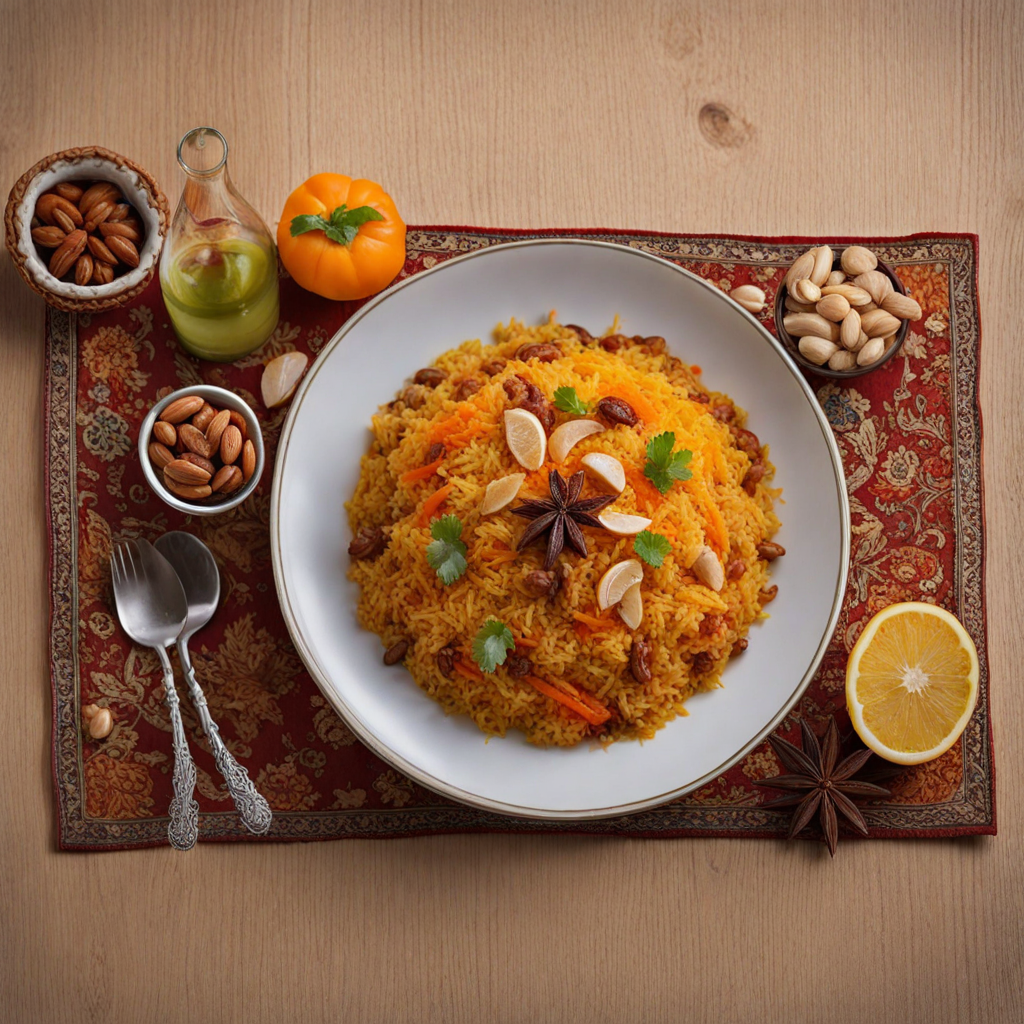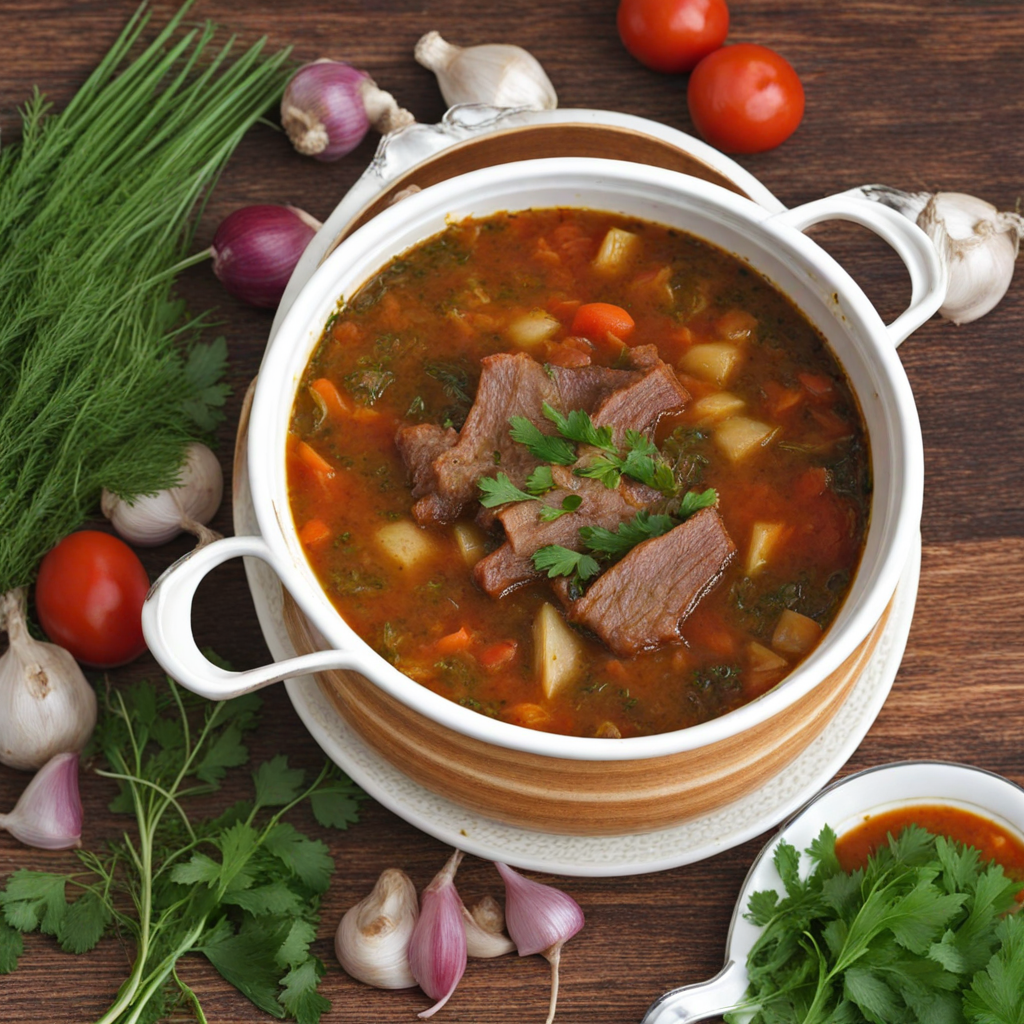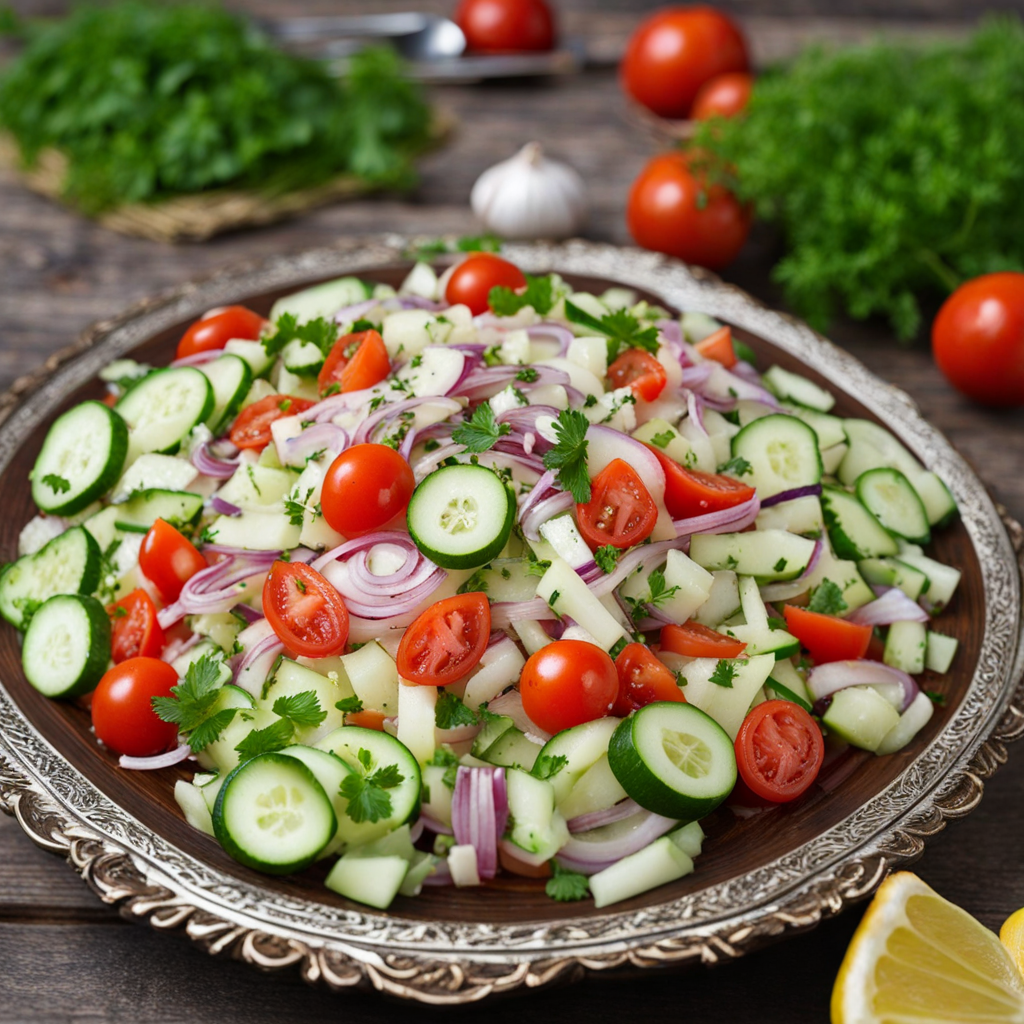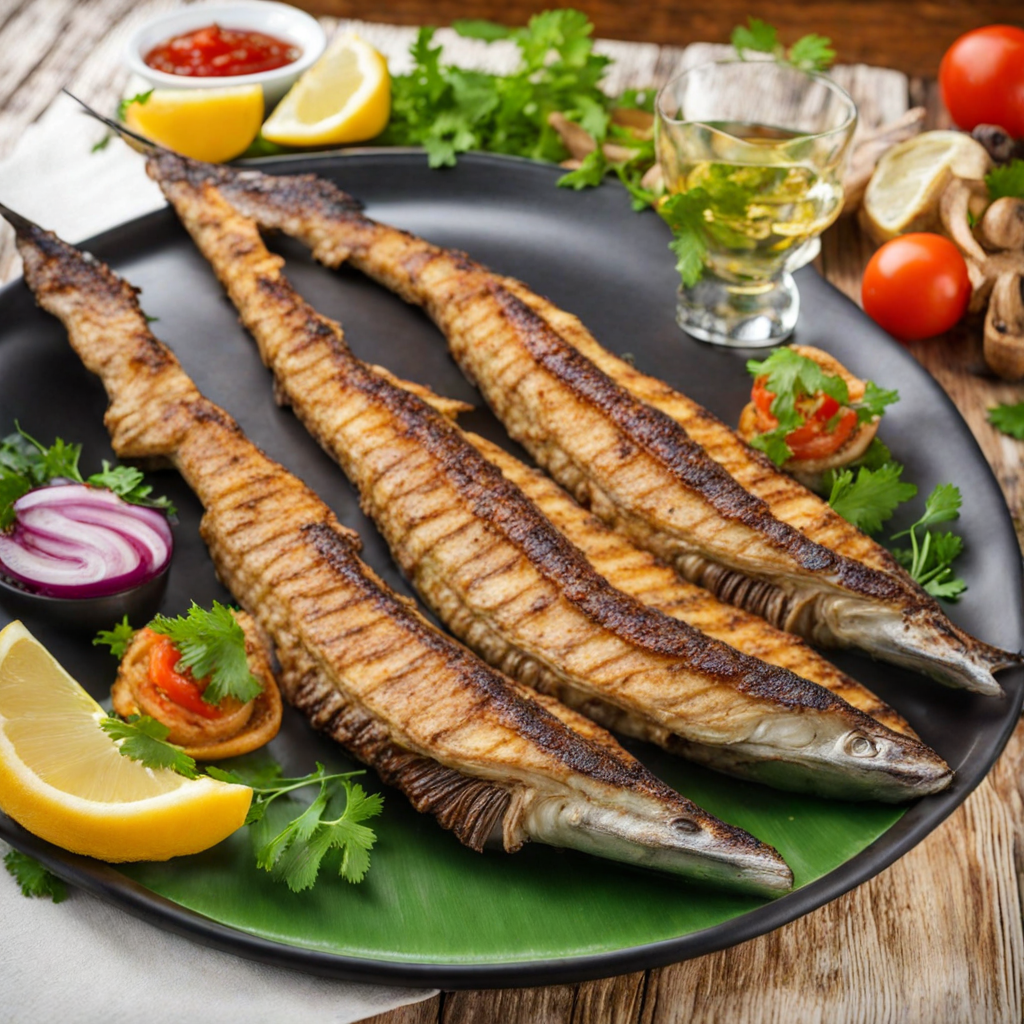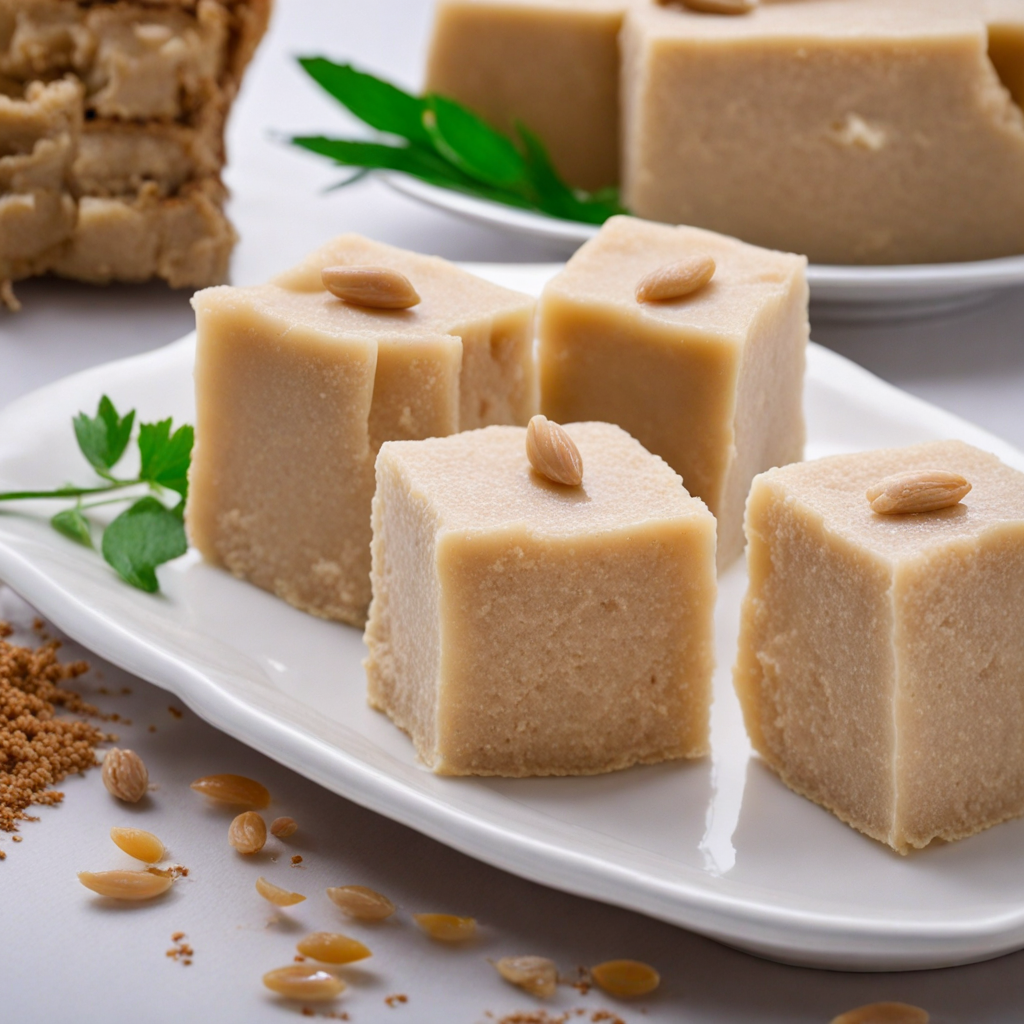Plov
Plov, a beloved national dish of Azerbaijan, is a fragrant and flavorful rice pilaf that embodies the rich culinary heritage of the region. At its core, plov is made with long-grain rice, typically basmati, which is known for its nutty aroma and fluffy texture. The rice is cooked in a savory broth, often infused with a blend of spices such as saffron, cumin, and turmeric, giving it a beautiful golden hue. The dish is usually embellished with a variety of ingredients, including tender pieces of lamb or chicken, caramelized onions, and a medley of vegetables like carrots and chickpeas, creating a harmonious balance of flavors and textures. What sets Azerbaijani plov apart is the unique layering technique used during its preparation. The rice is often steamed over a bed of sautéed meats and vegetables, allowing it to absorb the rich flavors from the bottom while keeping the grains light and fluffy. Additionally, plov may be garnished with dried fruits such as raisins or apricots, and topped with a sprinkle of fresh herbs like dill or parsley, adding a touch of sweetness and brightness to the dish. This combination of savory and sweet elements makes plov not just a meal but an experience that tantalizes the palate. Served on special occasions and festive gatherings, plov is more than just food; it is a symbol of hospitality and tradition in Azerbaijani culture. The dish is often accompanied by a side of tangy pickles or a refreshing salad, allowing diners to enjoy a full spectrum of flavors. To truly appreciate plov, one must savor each bite, experiencing the tender meat, aromatic rice, and the delightful interplay of spices that evoke the essence of Azerbaijan’s rich culinary landscape.
How It Became This Dish
The History of Plov: A Culinary Treasure of Azerbaijan #### Origins and Early History Plov, a dish deeply rooted in Azerbaijani culture, is more than just a meal; it is a symbol of hospitality, celebration, and tradition. The origins of plov can be traced back to ancient Persia, where rice was first cultivated around 2000 BCE. As rice spread through trade routes, it found its way into the kitchens of the Caucasus, including Azerbaijan. The word "plov" is derived from the Persian word "polow," which refers to a type of pilaf made with rice. In the early days, plov was a simple dish, often prepared with a mix of rice, vegetables, and meat. The use of spices, nuts, and dried fruits began to emerge as trade introduced new flavors into the region. By the 8th century, plov had evolved significantly, becoming a staple at banquets and celebrations. The dish was closely associated with the Persian royal court, where it was served to showcase the wealth and sophistication of the hosts. #### Cultural Significance In Azerbaijan, plov is much more than mere sustenance; it is an integral part of social and religious life. The preparation and serving of plov are often ritualized, marking important occasions such as weddings, family gatherings, and religious holidays. It is customary for the bride's family to prepare a lavish plov to welcome guests during a wedding feast, representing the union of two families and the importance of hospitality. Plov is often served on special occasions, particularly during Nowruz, the Persian New Year, which celebrates the arrival of spring. Traditionally, plov is prepared with a variety of ingredients, including saffron, barberries, and lamb, symbolizing prosperity and fertility. The dish serves not only as a centerpiece but also as a reflection of Azerbaijani values of generosity and community. #### Ingredients and Preparation Azerbaijani plov is distinct in its preparation and ingredients, which vary regionally. The most common type of rice used is "basmati," known for its long grains and fragrant aroma. The cooking process involves several techniques, including steaming and layering, which are essential to achieving the perfect texture. One of the defining features of Azerbaijani plov is the "tahdig," a crispy layer of rice that forms at the bottom of the pot. This prized crust is often sought after, with families competing to achieve the ideal balance between a tender top layer and a crunchy base. The rice is typically flavored with saffron, giving it a golden hue, and is often adorned with a variety of toppings, such as sautéed onions, dried fruits, nuts, and meats, including chicken, lamb, or beef. Regional variations of plov can also include unique ingredients. For example, in the mountainous regions, plov may be prepared with wild herbs and mushrooms, while coastal areas might incorporate seafood. The diversity of ingredients and cooking techniques reflects the rich agricultural landscape of Azerbaijan and the influence of neighboring cultures. #### Development Through the Ages The evolution of plov mirrors the broader historical changes in Azerbaijan. During the 11th to 13th centuries, the Seljuk Turks and later the Mongols introduced new culinary practices that further enriched the dish. The Silk Road facilitated the exchange of spices and ingredients, allowing Azerbaijani cooks to experiment with flavors and techniques. In the 19th century, with the rise of the Russian Empire and increased interactions with Europe, Azerbaijani cuisine began to adopt elements from Russian and European culinary traditions. This period saw the incorporation of dairy products, such as yogurt and sour cream, into plov recipes, enhancing its flavor and texture. The Soviet era brought significant changes to Azerbaijani cuisine, including plov. While the emphasis on traditional dishes remained, there was a push for standardization and mass production of food. Despite this, plov retained its status as a cherished dish, often served during state functions and celebrations. The recipe continued to evolve, with urban families adapting traditional methods to suit modern lifestyles. #### Modern-Day Plov Today, plov remains a fundamental part of Azerbaijani identity, transcending generations and adapting to contemporary tastes. The dish has gained international recognition, featured in restaurants and culinary festivals around the world. Chefs often experiment with fusion variations, incorporating global ingredients while maintaining the essence of traditional plov. In Azerbaijan, plov is often accompanied by "duz" (salty) and "taze" (fresh) dishes, such as salads and pickles, which balance the richness of the rice. The dish is typically served family-style, encouraging communal dining and reinforcing the importance of togetherness in Azerbaijani culture. A variety of plov recipes continue to be passed down through families, each with its own unique twist and story. Modern chefs are increasingly exploring the historical roots of plov, reviving ancient recipes while also embracing innovative techniques. Culinary schools in Azerbaijan are also emphasizing the significance of plov in the national cuisine, ensuring that future generations appreciate and preserve this culinary heritage. #### Conclusion Plov is more than just a dish; it is a narrative woven into the fabric of Azerbaijani culture. From its ancient origins to its contemporary iterations, plov reflects the history, values, and diversity of Azerbaijan. It stands as a testament to the resilience and adaptability of culinary traditions, bridging the past and present while fostering connections among families and communities. As Azerbaijan continues to assert its identity on the global stage, plov remains a cherished emblem of its heritage—a dish that brings people together, celebrates life’s milestones, and honors the rich culinary tapestry of this beautiful country. Whether enjoyed at a lavish wedding feast or a humble family gathering, plov is a dish that embodies the warmth and generosity of Azerbaijani hospitality, making it a true treasure of the cuisine.
You may like
Discover local flavors from Azerbaijan


